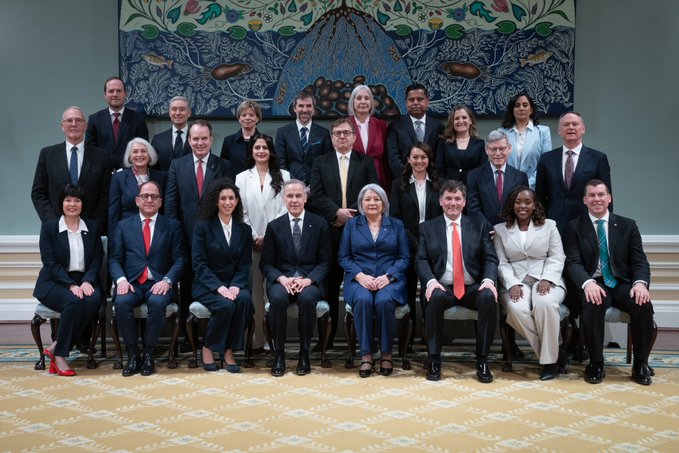Calgary (Rajeev Sharma): Mark Carney has officially taken office as Canada’s 24th Prime Minister, marking the end of Justin Trudeau’s nine-year tenure. In his inaugural speech, Carney emphasized the gravity of his new role, stating, “It is a solemn duty to serve as Prime Minister at this time of great consequence.” One of Carney’s first major moves was unveiling a smaller, 24-member transition cabinet, signaling a shift in leadership while maintaining some continuity in key areas. Key Cabinet Appointments and Changes
• François-Philippe Champagne is promoted to Finance Minister, replacing Chrystia Freeland.
• Chrystia Freeland moves to Minister of Transport and Internal Trade—her former Deputy Prime Minister role has been eliminated.
• Mélanie Joly retains her position as Foreign Affairs Minister.
• Dominic LeBlanc takes charge of International Trade and Intergovernmental Affairs.
• Anita Anand becomes Minister of Innovation, Science, and Industry.
• Steven Guilbeault, previously Environment Minister, now serves as Minister of Canadian Culture and Identity.
Carney has also introduced new faces into the cabinet:
• Arielle Kayabaga is appointed Government House Leader.
• Ali Ehsassi becomes Public Services and Procurement Minister.
• Kody Blois is named Agriculture Minister.
Major Departures and Demotions :
Several key Trudeau-era ministers have been dropped entirely, including Jean-Yves Duclos, Karina Gould, Mark Holland, Ahmed Hussen, Marc Miller, and Diane Lebouthillier.
Carney’s decision to eliminate the Deputy Prime Minister position and downsize the cabinet reflects his focus on a leaner, more action-driven government.
Strategic Priorities and Challenges Ahead :
Carney takes office amid growing trade tensions with the United States, particularly with President Donald Trump’s annexationist rhetoric. His government will focus on:
• Economic growth through higher-paying jobs and innovation.
• Affordability by adjusting taxation and cost-of-living policies.
• National security in response to U.S. policy shifts.
Declaring that Canada will be “action-oriented to meet the moment,” Carney positioned his government as a wartime cabinet, prepared to confront the nation’s economic and geopolitical challenges head-on.

